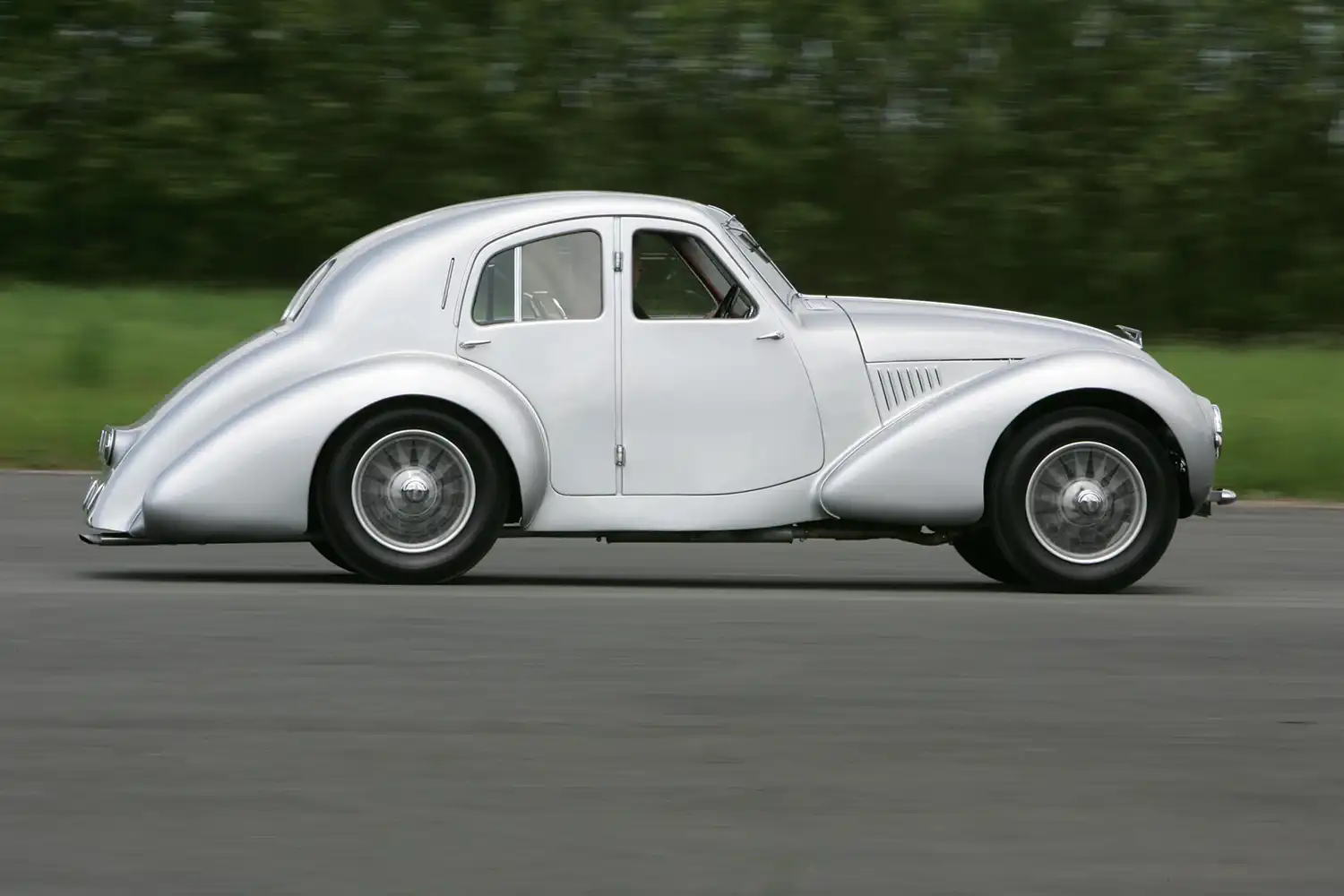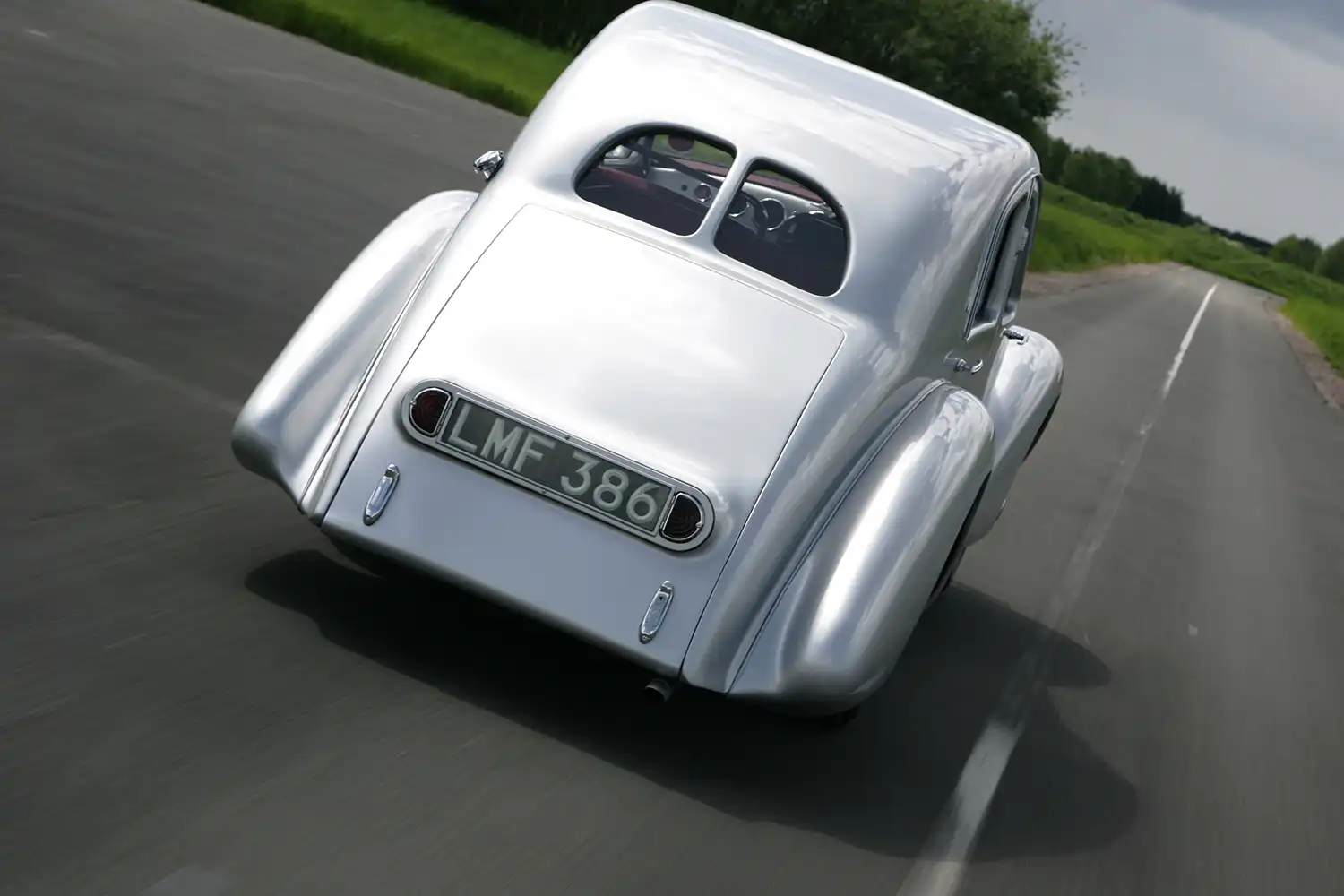
Patented in March 1939, the Aston Martin Atom came from a place of bold engineering and elegant foresight. The name “Atom” itself hinted at futuristic ambitions.
It featured an integrated body and chassis made from rectangular-section steel tubes, a structure far ahead of its time. Compared to round tubing, these were easier to join and could be adapted for stress-specific roles in the frame.
The body panels, made of lightweight alloy, weren’t structural. Instead, they were mounted to the steel framework using rubberized mounts. This allowed the Atom to remain impressively quiet, even over thousands of miles.
Performance and Practicality in Wartime
Although built during the early stages of World War II, the Atom wasn’t just a garage-bound experiment. Aston Martin made sure it was functional.
Despite steel shortages, the prototype managed to fit four doors and seat four passengers. The wheelbase was kept relatively short to match available materials, but Aston Martin planned to stretch the production version for more space.
Gordon Sutherland, then-owner of Aston Martin and the mastermind behind the Atom, put the car to work. Over the course of seven years, he covered nearly 90,000 miles in the car, mostly while supporting wartime duties. The car could reach 90 mph and, remarkably, never developed a rattle.
A Test Drive Into the Future
Even during wartime restrictions, selected journalists were granted the rare opportunity to test drive the Atom.
What they experienced was unlike anything from the era. The car was solid, refined, and quietly advanced. While production was never realized due to the war and the changing post-war economy, the Atom laid the foundation for the Aston Martins that followed in the 1950s.
A Legacy That Lingered
Although only one Atom was built, its legacy lives on. It demonstrated that even in the face of global uncertainty, visionaries like Sutherland and Aston Martin could forge ahead with radical ideas.
From engineering philosophy to chassis architecture, the Atom’s DNA would later inspire post-war models, bridging the gap between traditional British motoring and modern sports cars.
Summary
The Aston Martin Atom wasn’t just a concept, it was proof that innovation can persist even during the darkest times. With its advanced structure, refined performance, and futuristic spirit, the Atom became a quiet yet powerful symbol of resilience and creativity in automotive history.
Disclaimer: This article highlights a unique historic prototype not intended for sale or production. Specifications are based on historical records.
Source: Aston Martin
